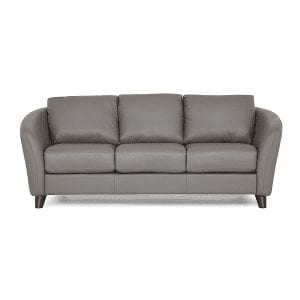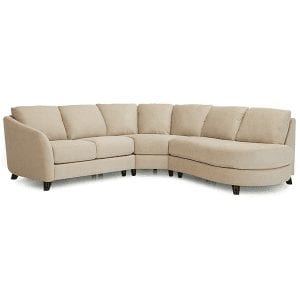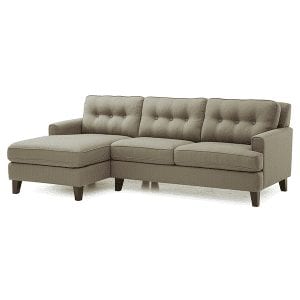Shopping for a new table, sofa or bed? Furniture is an investment—not something you want to replace often. You want high-quality furniture that will last and won’t chip, fade, scratch or break.
So how do you spot poor-quality furniture before it finagles its way into your home and disintegrates before your very eyes? It’s a great question, and one we’re here to help you answer.
Don’t shell out the money only to be saddled with regret. Knowing what to look for in quality furniture could make all the difference. Having a trained eye and asking the right questions will help you spot telltale signs of shoddy craftsmanship and avoid a bad buy.
When it comes to grading furniture, most of what matters falls into two categories: composition and construction. Knowing what the piece is made of and how it was made tells you a lot. But there’s a bit more to it than that. Here’s our guide for what to look for in quality furniture.
High-Quality Furniture Materials
High-quality furniture is made of high-quality materials, right? Generally speaking, yes. But a table made of durable hardwood may still be poorly constructed (more on that in the next section). Materials used to make furniture are indeed an indicator of quality, but don’t make sweeping assumptions based on that fact alone.
On the composition front, your checklist will depend on whether the furniture is wood or upholstered. Here’s a closer look at the characteristics that should signal you’re off to a good start when shopping for well-made furniture.
High-Quality Wood Furniture
Curious about the quality of the wood coffee table that caught your eye in the showroom? If so, you’ll want to do more than tap on its surface to see if it’s solid. Looks can be deceiving, so be thorough when assessing the quality of wood furniture materials. Pay attention to these four traits:
-
- Type – Solid wood furniture is preferable, and you’ll probably want to avoid particle board, fiberboard or plywood with fewer than nine layers. These low-cost materials have a much shorter lifespan than wood and can scratch, dent and crumble more easily. Sometimes lower-quality wood is covered with a thin layer of sturdier wood known as a veneer, which can be a viable option if done well.
- Finish – Finish is another important indicator of quality. Surfaces should be smooth and scratch-resistant, but a laminate or lower-quality wood that’s exposed might chip, gouge or peel. Lacquer will help protect the wood, but many furniture makers agree that using a catalyzed conversion varnish is even better.
- Weight – Heavier wood furniture is typically a sign it’s higher quality. Items made from particle board or fiberboard are usually lighter and, therefore, less durable. Moving heavy wood furniture is definitely a drag, but at least you can rest assured it’s more likely to stand the test of time.
- Knots – The grains and knots in natural wood can make for unique furniture, but there’s a downside. Knots are the weakest part of the tree and, therefore, the furniture. Avoid knotty soft woods like pine or pieces with too many visible knots.
High-Quality Upholstered Furniture
There’s a whole different set of criteria for upholstered furniture—and assessing quality is even harder when the innards are shrouded in fabric. For sofas and accent chairs, peeking at the hardware and inside the cushions, if possible, will tell you a lot about the quality. Take stock of these things before you buy:
- Frame – Frames for high-quality upholstered furniture are made from solid kiln-dried wood or engineered hardwood. A durable frame won’t creak or wobble when there’s weight on the seat cushions or arms.
- Fill density – Cushions can be filled with a lot of materials—some good, some bad. Most cushions contain down, foam or foam wrapped with down or synthetic down. Down is preferred. Foam won’t hold up as well, especially if the density is below 1.8 pounds. Whichever you choose, do yourself a favor and make sure the cushions are reversible.
- Springs – These metal coils give upholstered furniture its shape and keep cushions from sagging. Sinuous springs are most common and can last for several years, although luxury furniture makers extol “eight-way hand-tied” springs—the industry gold standard.
High-Quality Furniture Construction
Now to the assembly side of things. There are multiple ways to put a piece of furniture together. But the secret to longevity lies in how the components are arranged and affixed. Just like with homes, construction standards matter and determine the overall furniture quality. Be sure to evaluate these elements:
- Joints – Examining the joints and corners is a good starting place. If the piece is held together by glue, staples or nails, you may want to pass. Doweled or dovetailed joints lock into place and are excellent at holding furniture together. Screws and pegs also work well.
- Drawers – Testing drawers is a must before buying. They should roll effortlessly, stay closed and have a floating bottom that won’t slide, cave or pop out. Handles and knobs should be screwed in tightly so they’re stationary.
- Metal frames – Metal frames for beds and sofas should be welded at the joints rather than attached with screws and bolts. If not evenly welded, these connections are weak spots that could buckle under too much weight.
When in Doubt, Ask
Never hesitate to ask questions when you’re on the hunt for high-quality furniture. Sales associates should be able to give you specifics about materials, manufacturing and warranties. And don’t forget to inquire about customer complaints as well as the store’s return policy.
Contact us today if you have your eye on a piece of furniture in our showroom. We’ll be happy to answer any questions you have about the high-quality living, dining and bedroom furniture brands we carry.



